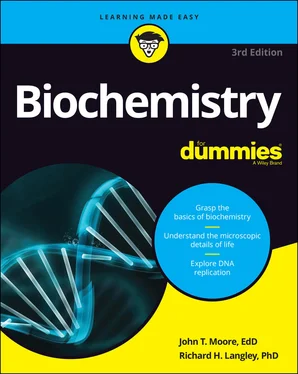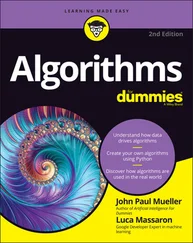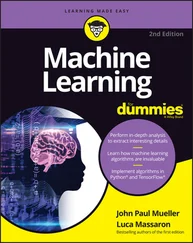139 140
140 141
141 142
142 143
143 144
144 145
145 146
146 147
147 148
148 149
149 150
150 151
151 152
152 153
153 154
154 155
155 156
156 157
157 158
158 159
159 160
160 161
161 162
162 163
163 164
164 165
165 166
166 167
167 168
168 169
169 170
170 171
171 172
172 173
173 174
174 175
175 176
176 177
177 178
178 179
179 180
180 181
181 182
182 183
183 184
184 185
185 186
186 187
187 188
188 189
189 190
190 191
191 192
192 193
193 194
194 195
195 197
196 198
197 199
198 200
199 201
200 202
201 203
202 204
203 205
204 206
205 207
206 208
207 209
208 210
209 211
210 212
211 213
212 214
213 215
214 216
215 217
216 218
217 219
218 220
219 221
220 222
221 223
222 224
223 225
224 226
225 227
226 228
227 229
228 230
229 231
230 232
231 233
232 234
233 235
234 237
235 238
236 239
237 240
238 241
239 242
240 243
241 244
242 245
243 246
244 247
245 248
246 249
247 250
248 251
249 252
250 253
251 254
252 255
253 256
254 257
255 258
256 259
257 260
258 261
259 262
260 263
261 264
262 265
263 266
264 267
265 268
266 269
267 270
268 271
269 272
270 273
271 274
272 275
273 276
274 277
275 278
276 279
277 280
278 281
279 282
280 283
281 284
282 285
283 286
284 287
285 288
286 289
287 290
288 291
289 292
290 293
291 294
292 295
293 296
294 297
295 298
296 299
297 300
298 301
299 302
300 303
301 304
302 305
303 306
304 307
305 308
306 309
307 310
308 311
309 312
310 313
311 314
312 315
313 316
314 317
315 318
316 319
317 321
318 322
319 323
320 324
321 325
322 326
323 327
324 328
325 329
326 330
327 331
328 332
329 333
330 334
331 335
332 336
333 337
334 338
335 339
336 340
337 341
338 342
339 343
340 344
341 345
342 346
343 347
344 348
345 349
346 350
347 352
348 353
Welcome to the third edition of Biochemistry For Dummies! We’re certainly happy you’ve decided to delve into the fascinating world of biochemistry. Biochemistry is a complex area of chemistry, but understanding biochemistry isn’t really complex. It takes hard work, attention to detail, and the desire to know and to imagine. Biochemistry, like any area of chemistry, isn’t a spectator sport. You must interact with the material, try different explanations, and ask yourself why things happen the way they do.
If you work hard, you can get through your biochem course. More important, you may grow to appreciate the symphony of chemical reactions that take place within a living organism, whether it’s a one-celled organism, a tree, or a person. Just like each individual instrument contributes to an orchestra, each chemical reaction in an organism is necessary, and sometimes its part is quite complex. However, when you combine all the instruments and each instrument functions well, the result can be a wonder to behold. If one or two instruments are a little out of tune or aren’t played well, the orchestra still functions, but things are a little off. The sound isn’t quite as beautiful as it might be, or the listener might have a nagging sensation of something being wrong. The same is true of an organism. If all the reactions occur correctly at the right time, the organism functions well. If a reaction or a few reactions are off in some way, the organism may not function nearly as well. Genetic diseases, electrolyte imbalance, and other problems may cause the organism to falter. And what happens then? Biochemistry is often the field in which researchers find ways of restoring the organism to health and seek cures for many modern medical maladies.
Biochemistry For Dummies is an overview of the material covered in a typical college-level biochemistry course. In this third edition, we update the content and correct the errors and omissions that crept into the first two editions. We hope that this edition is of even more help than the second. We’ve made every attempt to keep the material as current as possible, but the field is changing ever so quickly. The basics, however, stay the same, and that’s where we concentrate our efforts. We also include information on some of the applications of biochemistry that you read about in your everyday life, such as forensics, cloning, gene therapy, genetic testing, and genetically modified foods.
We’ve organized the text in a logical progression of topics that may be used in a biochemistry course. Along the way, we use the following conventions to make the presentation of information consistent and easy to understand:
When we introduce new terms, they appear in italics.
We use bold text to highlight keywords in bulleted lists.
We also make extensive use of structures and reactions. While reading, try to follow along with the associated figures.
While you flip through this book, you can see a lot of chemical structures and reactions. Much of biochemistry revolves around knowing the structures of the molecules involved in biochemical reactions. Function follows form. If you’re in a biochemistry course, you’ve probably had at least one semester of organic chemistry. You might recognize many of the structures, or at least the functional groups, from your study of organic chem. You can see many of those mechanisms that you loved (and hated) here in biochemistry.
If you’re taking a biochemistry course, use this rather inexpensive book to supplement that very expensive biochemistry textbook. If you bought this book to gain general knowledge about a fascinating subject, try not to get bogged down in the details. Skim the chapters. If you find a topic that interests you, stop and dive in. Have fun learning something new. You don’t have a whole lot of money invested in this book, so don’t feel obligated to read everything. When you’re done, you can put it on your bookshelf alongside Chemistry For Dummies, The Doctor Who Error Finder, and A Brief History of Time as a conversation piece.
We assume — and we all know about the perils of assumptions — that you’re one of the following:
A student taking a college-level biochemistry course
A student reviewing your biochemistry for some type of standardized exam (the MCAT, for example)
An individual who wants to know something about biochemistry
A person who’s been watching way too many forensic TV shows
If you fall into a different category, we hope you enjoy this book anyway.
If you ever read a For Dummies book before (such as the wonderful Chemistry For Dummies, by one of this book’s authors, John T. Moore), you can recognize most of the icons used in this book, but here are their meanings anyway:
Читать дальше












